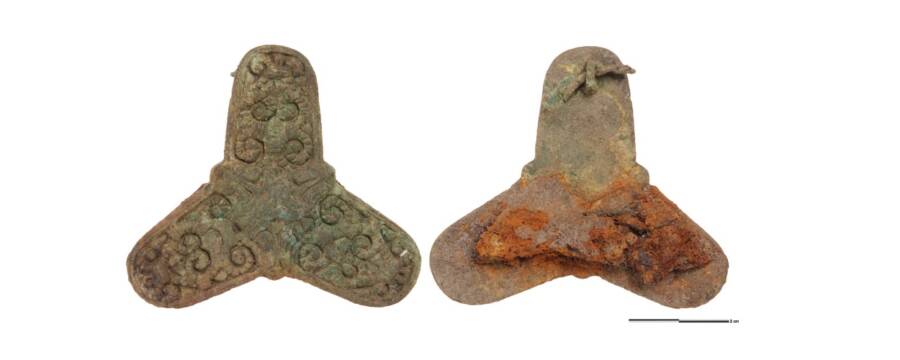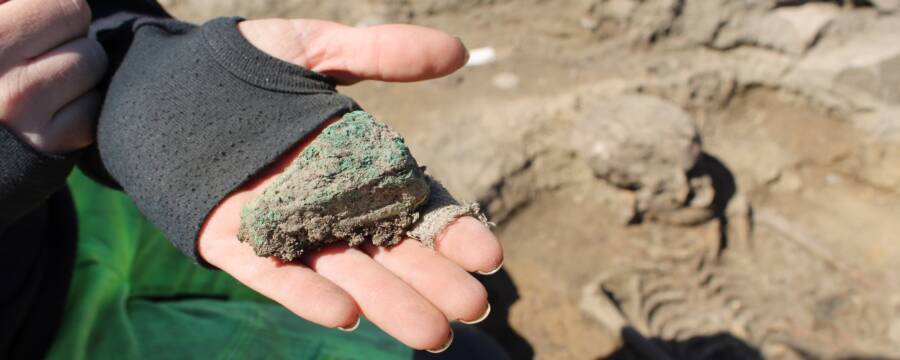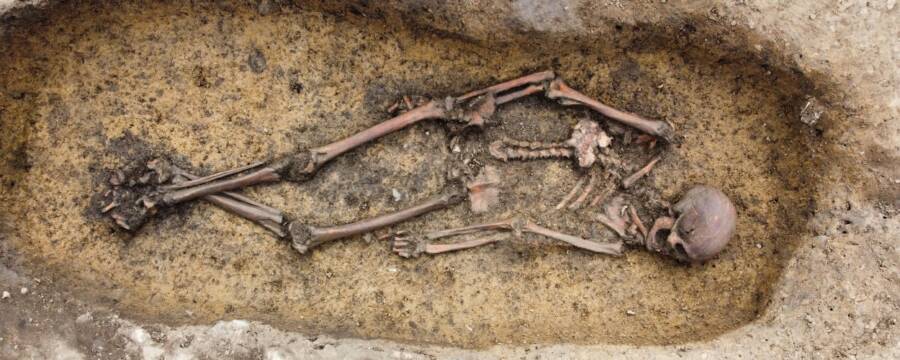Archaeologists in Denmark just hit the jackpot—50 remarkably well-preserved Viking skeletons have been unearthed near the city of Odense. If you’re picturing old bones crumbling to dust, think again. These remains are so well-preserved that scientists are eagerly gearing up for DNA analyses that might unlock new insights into Viking life. Who were these people? What were their lives like? Let’s dig into the details (pun intended).
Thank you for reading this post, don’t forget to subscribe!The Discovery of a Lifetime: Well-Preserved Viking Skeletons
Over the past six months, the quiet countryside of Åsum, Denmark, has become an archaeological hotspot. Experts from Museum Odense have uncovered more than 50 Viking skeletons buried in a 20,000-square-foot graveyard dating back to the ninth and tenth centuries. According to Michael Borre Lundø, an archaeologist and museum curator, this kind of discovery is rare. “It is truly unusual to find so many well-preserved skeletons at once,” he says, highlighting how this find opens the door to extensive scientific research.
Read more: How Cat Memes Went Viral Over 100 Years Ago
Imagine a Viking cemetery so well-preserved that scientists can now investigate not only the people’s health, diet, and origins but also their possible family connections. Yes, the DNA analyses could reveal if these long-dead Vikings were related, and that’s significant because no similar research has ever been conducted on a site like this before.

A Glimpse Into Viking Burial Practices
The burial site in Åsum isn’t just any cemetery. Some of the skeletons were found in wooden coffins, while others were simply wrapped in cloth. Among the graves, archaeologists also discovered burnt bones, likely belonging to enslaved individuals or animals sacrificed to accompany their owners in the afterlife.
One particularly striking find was the grave of a high-status woman buried in a Viking wagon. Yes, you read that right—a wagon. According to Lundø, she was likely buried with her finest clothes and belongings, and the grave goods found with her are just as fascinating. Among the items were a glass-beaded necklace, an iron key, a knife with a silver wire-wrapped handle, and a mysterious shard of glass thought to be an amulet. A decorated wooden box at the foot of the wagon remains unopened, leaving archaeologists (and us) curious about what treasures lie inside.
Other graves have revealed items like a bronze brooch, a single red bead, and even a piece of rock crystal imported from Norway. These finds suggest that the Vikings buried at Åsum were part of international trade networks that flourished during the Viking Age.

What Can DNA Tell Us About These Vikings?
But while the grave goods are impressive, the real star of the show is the condition of the skeletons themselves. Sarah Croix, an associate professor at Aarhus University, explained that the graves are so well-preserved that researchers might be able to perform ancient DNA (aDNA) analyses on most of the remains. If successful, this would be the first time such an analysis has been conducted on Viking skeletons in this region.
Why is that exciting? Well, DNA can reveal a treasure trove of information—where these Vikings came from, whether they were part of the same family, and what their genetic makeup can tell us about their lives and society. This kind of research could provide a deeper understanding of Viking kinship and migration patterns, offering a fresh perspective on who these people were and how they lived.
A Central Settlement in Viking Denmark
This discovery doesn’t just illuminate Viking life; it also highlights the importance of Åsum as a settlement. According to Lundø, the grave goods and burial practices suggest that Åsum was a key village in the Viking hinterlands surrounding what is now Odense. The Vikings buried here were likely aware of the early urban development happening just a few kilometers west in what was then called Odins Vi (later Odense). Imagine them watching the birth of the town while their descendants witnessed the rise of Harald Bluetooth’s ring forts, built as part of his efforts to unify Denmark.
What’s Next for Viking Research?
So, what can we expect next? For one, the DNA analyses could change everything we thought we knew about Viking society. Were these people merchants, warriors, or perhaps both? Did they come from nearby regions, or were they part of a more extensive Viking network that stretched across Europe? And what about the unopened wooden box at the foot of the wagon—could it contain artifacts that rewrite history?
One thing’s for sure: this isn’t the last we’ll hear about the Åsum graves. As scientists continue to study the remains, new discoveries are bound to surface, shedding more light on the Vikings’ everyday lives, their connections to other cultures, and perhaps even their personalities.
The Viking Age: Still Full of Surprises
The Vikings have long captured the world’s imagination with their fearless warriors, far-reaching trade routes, and legendary longships. Yet, despite all we know, there’s still so much to learn. This latest discovery in Åsum reminds us that history isn’t just a collection of facts; it’s a puzzle waiting to be solved.
As the skeletons from Åsum give up their secrets, we’ll come closer to understanding the people behind the myth. Who knows? Maybe the Viking legacy will surprise us yet again.
Want to Stay Updated?
If you’re fascinated by Viking history and want to stay up-to-date with the latest discoveries, subscribe to our newsletter! Get all the latest archaeological finds delivered straight to your inbox and join the conversation as we continue to explore the lives of the Vikings.
This remarkable discovery in Denmark not only sheds light on Viking burial practices but also offers the potential for groundbreaking DNA research. With more revelations sure to come, it’s an exciting time to be a fan of ancient history!

